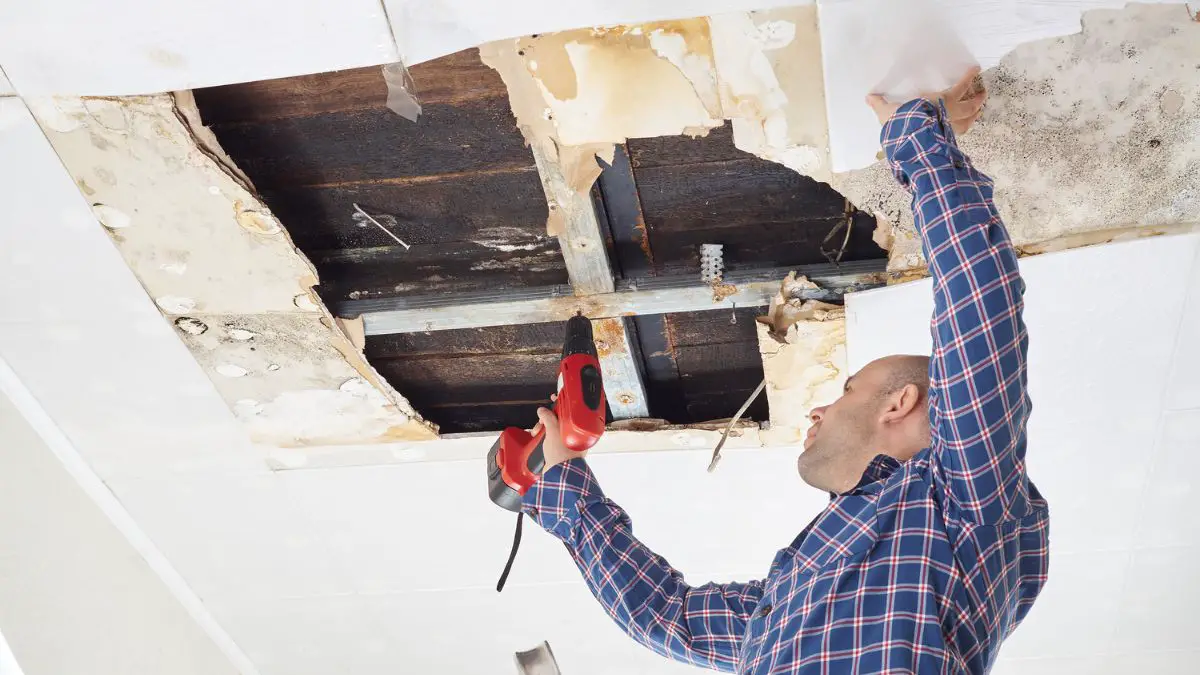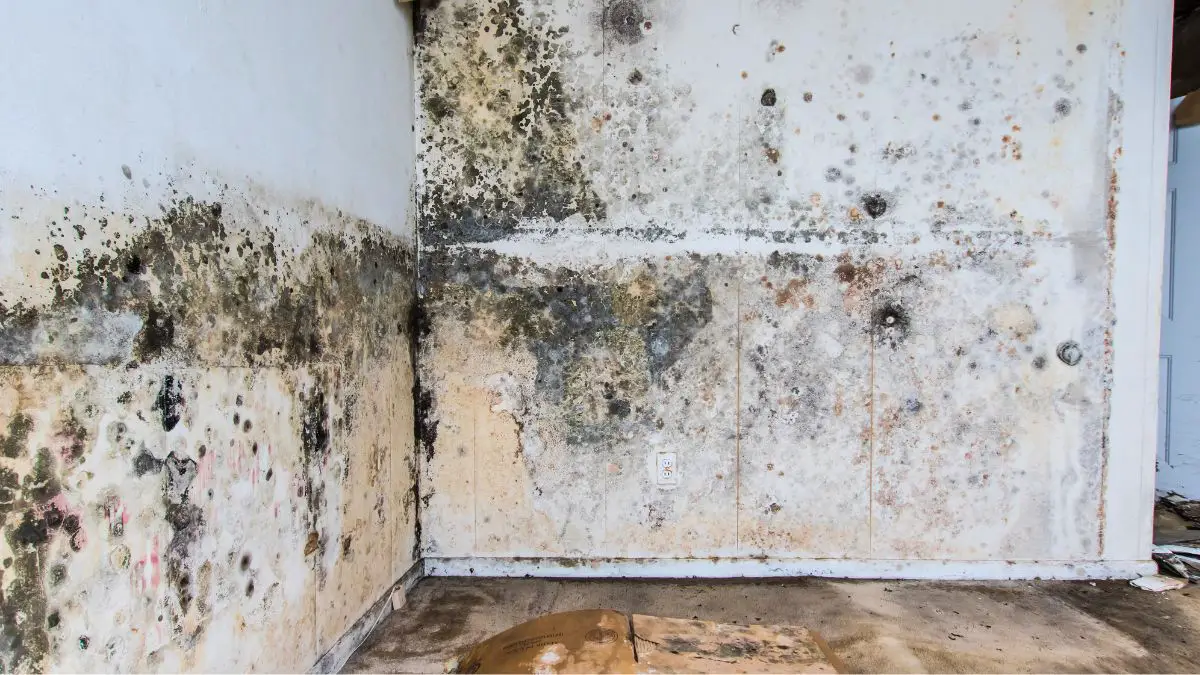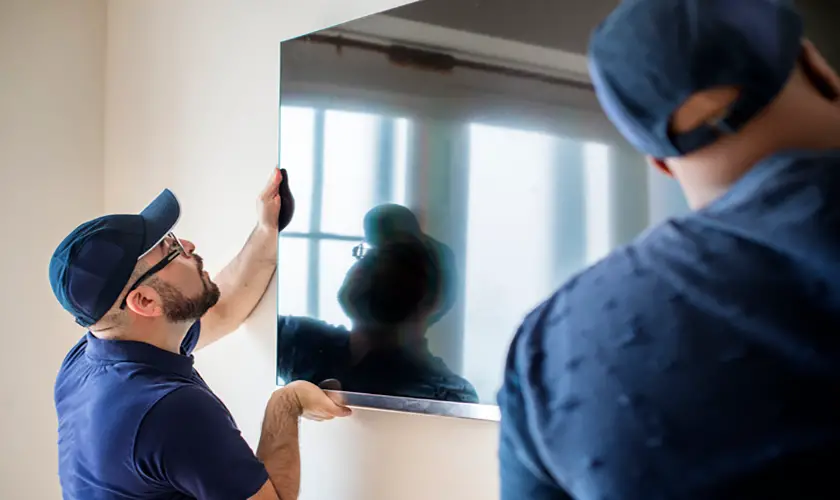Water damage is a common problem faced by homeowners. It occurs when water accumulates in places it shouldn’t, causing damage to the house’s structure. Learn how to identify signs of water damage in walls and prevent potential problems. Our expert guide covers obvious & hidden signs and modern technology.
Hidden water leak pipes, excess water, roof leaks, or foundation cracks can all cause water damage in homes. If these telltale signs are left undetected, water damage can lead to more serious issues like mold growth and even compromise the integrity of the house’s structure.
It’s important to detect the true type of water damage early on because it can be expensive and time-consuming to fix if water damage repair is ignored. The longer you wait, the worse the problem can become, leading to more extensive repairs or even requiring you to temporarily move out of your home.
We will focus on identifying signs of water damage in your walls. While water damage can occur in various parts of a house, such as ceilings or floors, walls are often overlooked since they are not as visible as other areas.
Recognizing early signs of water damage in walls is crucial so that timely repairs can be made before it becomes a bigger problem. So let’s dive into some common signs of water damage in walls and the type of water damage you can face!
| Key Takeaways |
|---|
| Water damage can occur due to hidden water leak pipes, excess water, roof leaks, or foundation cracks. |
| Signs of water damage in walls include discoloration, wet spots, peeling paint or wallpaper, and visible mold growth. |
| Less obvious signs of water damage include a musty odor and a soft or spongy feeling when pressing on the wall. |
| Detecting water damage can be aided by using tools like moisture meters and thermal imaging cameras. |
| Common causes of wall water damage are leaky pipes, roof leaks, and foundation cracks. |
| Homeowners can prevent water damage by inspecting plumbing systems, maintaining the roof, sealing gaps or cracks, cleaning gutters, fixing leaks promptly, and seeking professional help for restoration. |
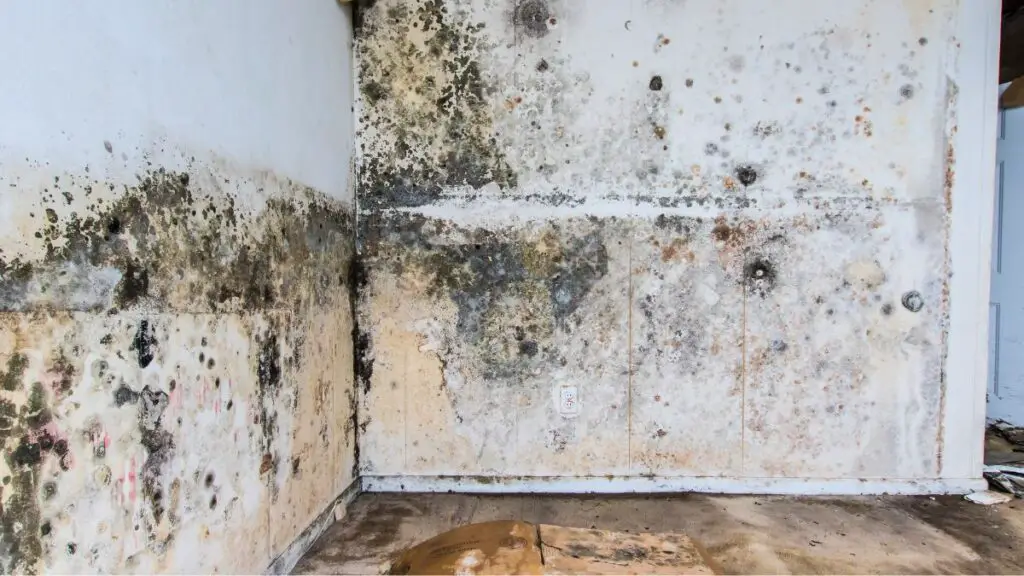
5 Signs of Water Damage
If you’re trying to determine whether you have signs of water damage in the wall, the first thing you should look for is discoloration. This can take many forms, but typically it will appear as dark spots, wet spots, or discolored areas on the wall.
While some signs of water damage in walls can be easy to spot, others may not be so obvious. Identifying these less apparent indicators is crucial for detecting hidden moisture problems before they cause significant structural damage or health issues.
You might notice blotches that look like rust or brown spots or streaks that seem to be running down from the ceiling.
Peeling Paint or Peeling Wallpaper
Another common clue of walls after water damage is peeling paint or wallpaper.
If you see paint or wallpaper that’s starting to separate from the wall, it’s likely because water has found its way in and is causing the adhesive to weaken. This can happen anywhere in your home with moisture, but it’s especially common in bathrooms and kitchens.
Mold Growth
Visible mold growth is another obvious sign of water damage in walls. Mold thrives in damp environments, so if there’s a moisture problem behind your walls, it won’t be long before mold starts to grow.
Patches or Soft Spots on the Wall
You’ll notice fuzzy patches or soft spots on your walls ranging from black to green or even pink. Taking action immediately is important when you see these signs of water damage in walls.
According to North Dakota State University (NDSU), remove the wallboard, plaster, and paneling to at least the flood level. Wallboard acts like a sponge when wet.
A Musty Odor
One less obvious sign of water damage in walls is a musty odor. A damp, musty smell often indicates mold growing somewhere; where there’s mold, there’s usually excess moisture.
If you notice a musty odor in your home but can’t find any visible signs of water damage or mold growth, then it’s likely that the problem is hiding behind your walls.
A musty odor may also indicate that stagnant water has accumulated within your wall cavities or insulation, leading to the growth of bacteria and fungi, which produce an unpleasant odor. This can create an unhygienic environment and potentially harmful air quality.
A Soft or Spongy Feeling when Pressing on the Wall
Another less obvious signs of water damage in walls is a soft or spongy feeling when pressing on the wall surface. Drywall should feel firm and solid when touched; if it feels soft or spongy as if it has become weakened from behind, then this could indicate that there’s been ongoing exposure to moisture or an active leak hidden within the wall cavity.
If left untreated over time, this could lead to dangerous conditions such as electrical shorts due to corroded wires and structural instability – making wet drywall a serious concern.
It is important to note that termite infestations could also cause this sponginess; therefore, it’s important to get professionals involved immediately so they can determine whether it’s termites eating away at your drywall or nearby wall dampness causing the structural integrity issues.
Ignoring them could lead to more serious problems down the line, such as structural issues or health hazards caused by mold growth. By addressing the issue early on, you can save yourself time and money in repairs and prevent further damage from occurring behind your walls.
Why These Signs Are Important to Look Out For
While these less obvious water damage signs may seem minor, they can indicate serious problems that could jeopardize the safety and comfort of your home.
Even if you don’t see any visible signs of water damage in walls like broken pipes, water spots, or signs of mold growth, it’s important to be aware of these subtler warning signs so that you can take action before the problem worsens.
If you suspect there may be signs of water damage in walls due to any of these less obvious signs or other indicators, such as a sudden increase in your water bill or unusual sounds from within the walls. It’s best to call a water damage restoration companies that can inspect your home and identify the source of the problem before it becomes too severe.
Using Technology to Detect Water Damage
Technology allows you to catch signs of water damage in walls early before they become problematic.
The Benefits of Modern Technology
Detecting water damage in walls can be challenging, especially when the signs of water damage in walls are not obvious. Fortunately, modern technology has come to our rescue by providing advanced tools that can help detect hidden water leaks. The most common tools for detecting water damage include moisture meters and thermal imaging cameras.
Moisture Meters Work Too
Moisture meters are handheld devices that measure the moisture content in a wall or any other material.
They work by sending electrical signals through the material and measuring how much resistance there is to the flow of electricity. When materials such as drywall or wood have high moisture content, they conduct more electricity due to their conductivity properties.
Water meter comes in two types: pin-type water meter and pinless water meter. Pin-type meters use two small pins inserted into the wall or tested material. In contrast, pinless meters use radio frequency signals to detect moisture from a distance without puncturing the tested surface.
Thermal Imaging Cameras are Useful for Identifying Water Damage
Thermal imaging cameras use infrared radiation to map temperature differences on surfaces visually. In water-damaged walls, thermal cameras can identify colder areas caused by evaporating moisture, which appears as “hot spots” in the camera’s display.
These hot spots can indicate potential leaks or hidden water leaks behind walls. Using thermal imaging cameras enables technicians to pinpoint problem areas more accurately than other current detection methods.
Using technology provides us with an advantage when it comes to identifying water damage in walls. Both moisture meters and thermal imaging cameras offer non-invasive methods that allow homeowners and professionals to locate potential trouble spots before they become bigger problems quickly.
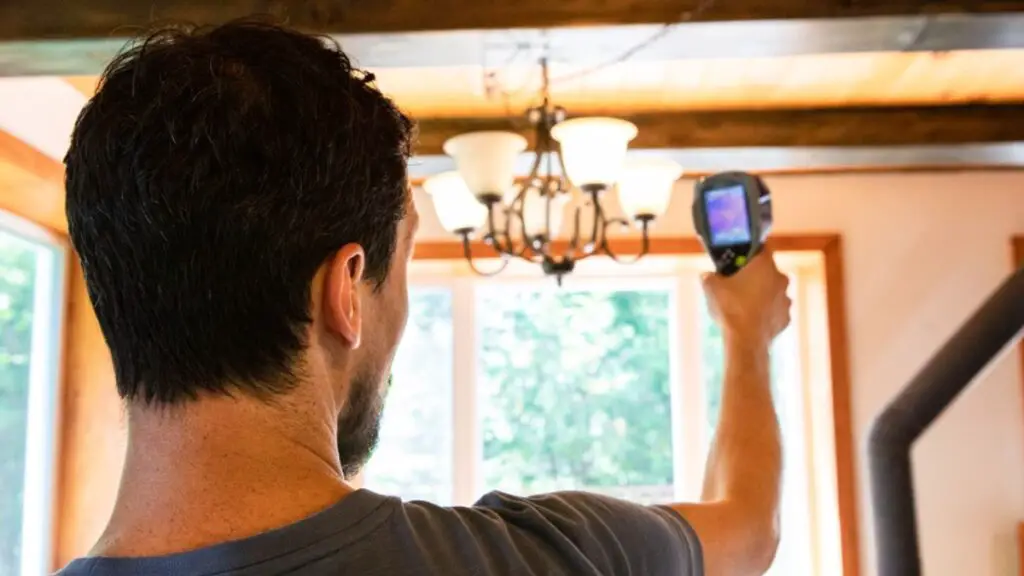
Common Causes of Wall Water Damage
Various factors can cause water damage in walls. Some common culprits are leaky pipes, roof leaks, and foundation cracks. Identifying the cause of water damage is crucial in preventing it from happening again.
Leaky Pipes
Plumbing issues are major signs of water damage in walls. Leaky pipes with a water leak can slowly seep water into the walls, causing discoloration, mold growth, and even structural damage if not addressed promptly. It’s important to inspect your plumbing system and plumbing fixture regularly can control any leaks as soon as possible.
If you’re experiencing signs of water damage in your walls but can’t pinpoint where it’s coming from, consider hiring a professional restoration company to perform a restoration process. They can detect hidden water leaks and provide solutions to fix them.
Roof Leaks
A damaged or leaking roof can lead to moisture problems in the walls below it. Rainwater can seep through cracks or gaps in the roof and trickle down into the walls, causing water damage over time.
To prevent roof leaks, be sure your roof is regularly inspected and maintained by a professional roofing contractor. If you notice any signs of a leaking roof, such as water stains on ceilings or walls or missing shingles on your roofline, have them fixed immediately.
Foundation Cracks
Cracks in your home’s foundation may not seem like an obvious cause of wall water damage, but they can be quite problematic. Water seeping through foundation cracks can slowly saturate the surrounding soil and eventually enter your basement or crawl space.
If you suspect that foundation cracks may be causing moisture problems in your home’s walls, consult a professional contractor specializing in foundation repair to assess the situation.
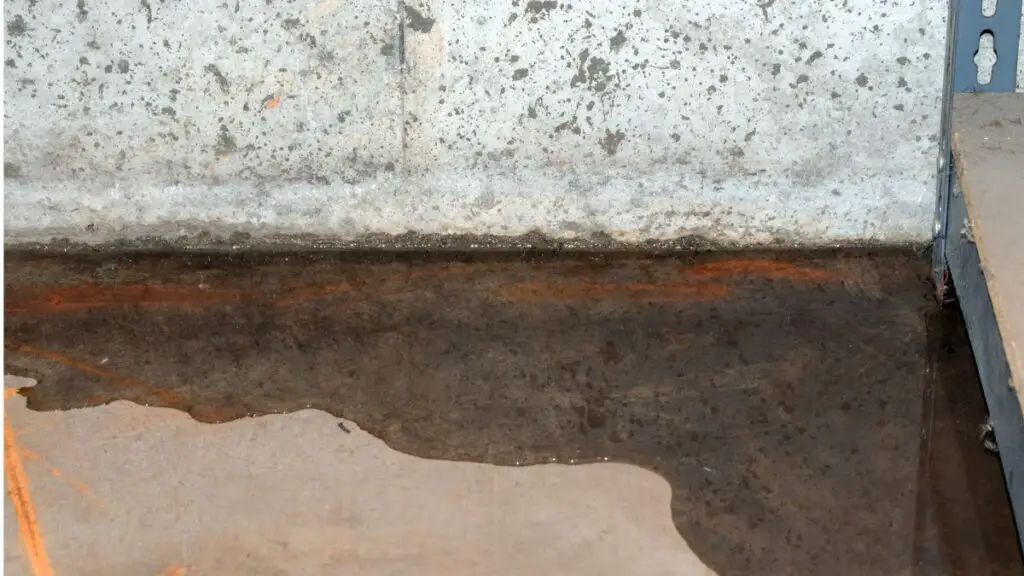
Tips for Homeowners – What to Do About Water Damage in Walls:
Preventing wall water damage starts with routine maintenance and vigilance. Here are some tips for homeowners to keep in mind:
- Regularly inspect your plumbing system – Have your roof inspected and maintained regularly.
- Seal gaps or cracks in windows, doors, or external walls to prevent water infiltration.
- Keep gutters clean and debris-free to prevent clogs leading to roof leaks.
- Fix any leaks or drainage issues around your home’s foundation as soon as possible by taking these proactive steps, you can help prevent water damage in your walls and ultimately save yourself time, money, and hassle.
- Consult any reliable water damage restoration company to control and fix the extensive damage.
Signs of Water Damage in Walls FAQs
Have other questions about water damage in walls? We have you covered. Here are some of our frequently asked questions.
How can you tell if a wall has water damage?
You can check the water damage by looking for soft textures, peeling paint, discoloration, mold growth, or a musty odor.
What happens if water gets in the walls of the house?
Water can cause mold growth, structural damage, electrical hazards, compromised low quality insulation, and poor air quality with no ventilation.
What does mild water damage look like?
Mild water damage looks like light stains, minor irregularities on the surface, minimal mold growth, and a slight musty odor.
Can you fix a water damaged wall?
You can fix water damage to walls, but the extent of repairs depends on how severe the damage is.
What does water damage on wall look like?
If your wall is damaged by water, you may see signs of damage like mold growth, soft or fluff behind the wall, peeling of wallpaper, etc.
Closing Thoughts
Water damage is a serious issue that can cause significant damage if not addressed quickly. Whether it’s a leaky pipe, roof leak, or foundation crack that’s causing the problem, identifying the source of the moisture is crucial.
As a homeowner, it’s important to stay vigilant and perform routine maintenance on your home’s plumbing system, roof, and foundation. By preventing water damage in your home’s walls, you can help avoid costly repairs down the road.


